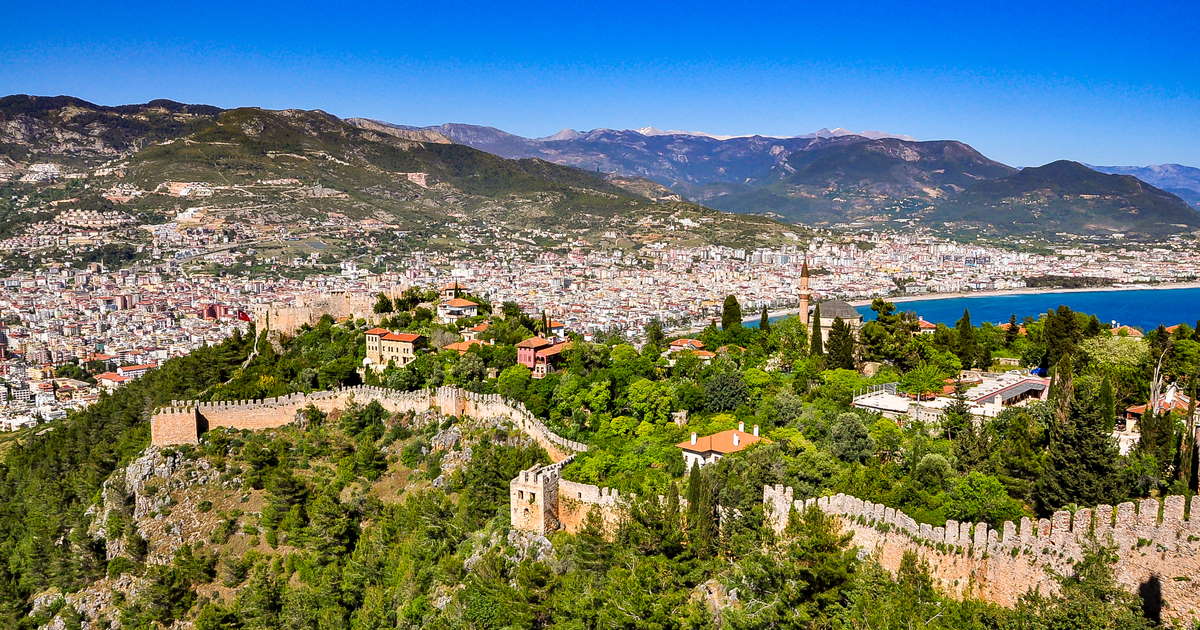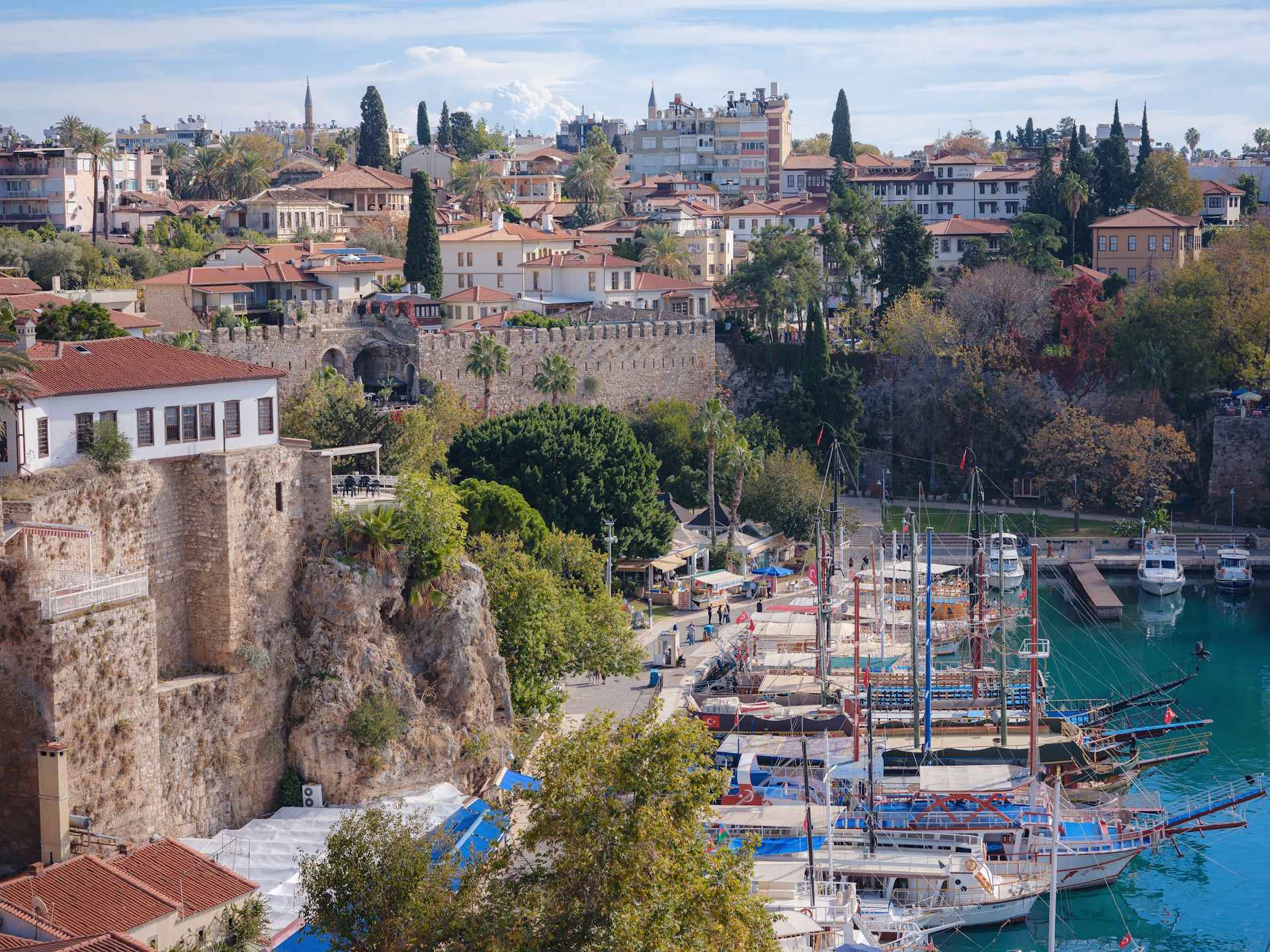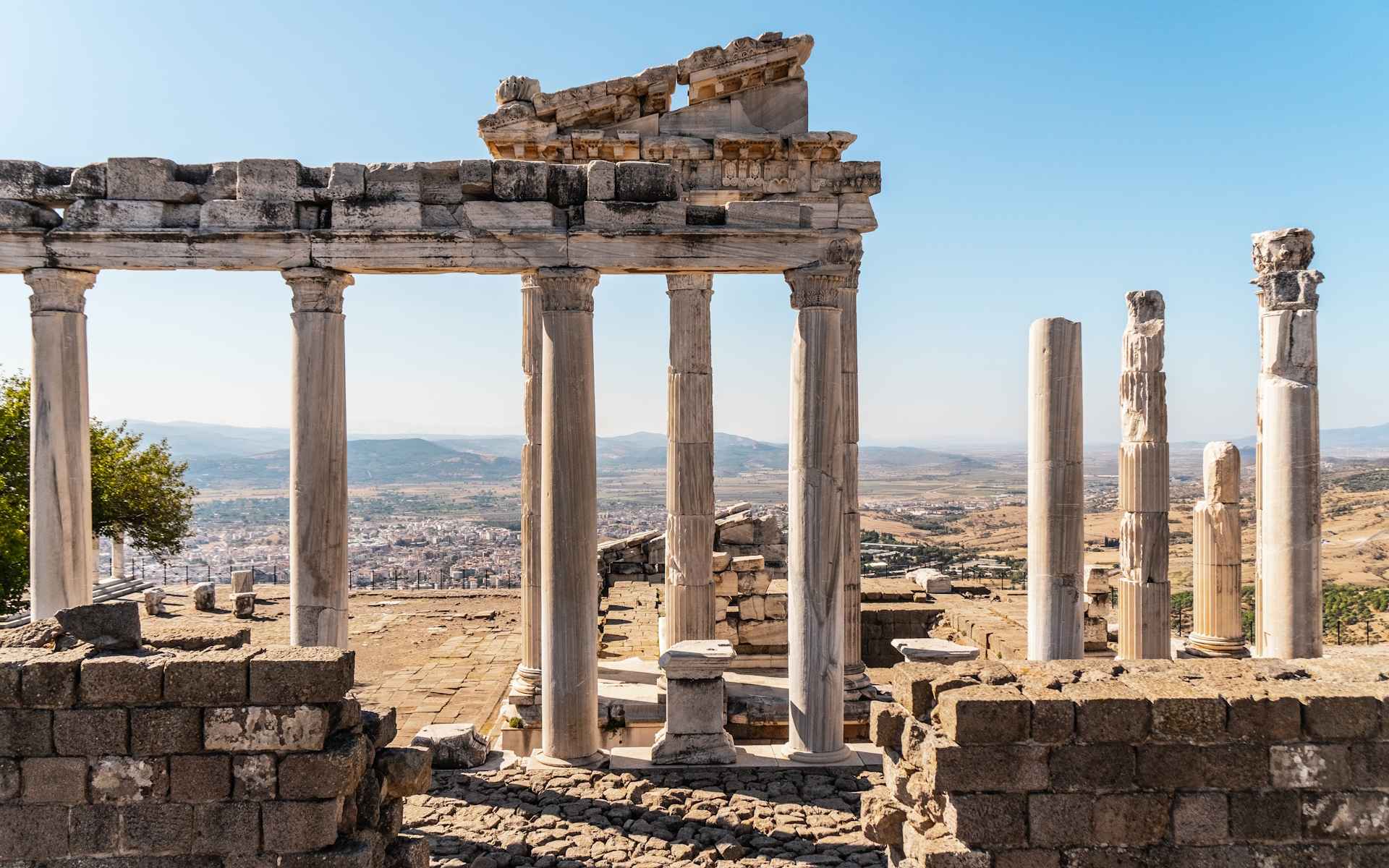Dolmabahce Palace
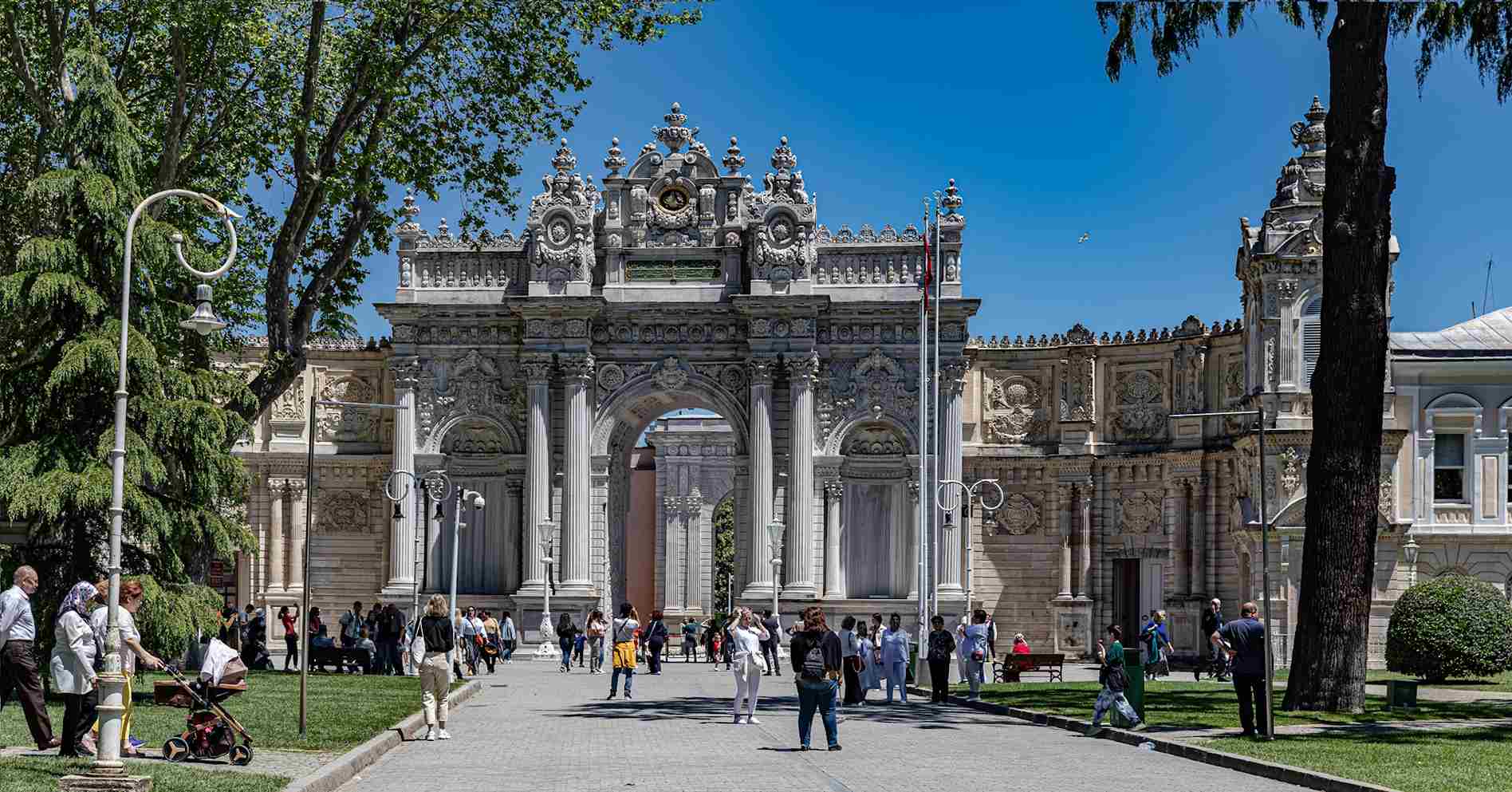
Historical and Architectural Features of Dolmabahce Palace
Dolmabahce Palace, located on the European shores of the Bosphorus Strait in Istanbul, is one of the most important symbols of the Ottoman Empire’s 19th-century transformation. Commissioned by Sultan Abdulmecid I and completed in 1856, the palace represents a significant shift in Ottoman architecture and governance, as it became the main administrative center of the empire. Unlike previous Ottoman palaces that adhered to traditional Islamic architectural styles, Dolmabahçe embraced Western influences, incorporating elements of Baroque, Rococo, and Neoclassical design. These styles were deliberately chosen to project an image of modernity and progress, aligning the empire with European powers of the time.
The palace’s exterior is imposing, with its massive façade facing the Bosphorus, a location chosen to emphasize the empire’s control over the strategically vital waterway. The blending of architectural styles was not merely for aesthetic purposes but also symbolized the Ottoman Empire’s desire to bridge the East and West during a time of significant cultural, political, and economic reform.
Lavish Interiors: A Display of Ottoman Wealth
Stepping inside Dolmabahce Palace, visitors are immediately struck by the opulence of its interiors. The palace is famous for its use of luxurious materials, including marble, gold leaf, and crystal. The rooms and halls are adorned with some of the most intricate decorations and furnishings found in any royal residence of the time. Perhaps the most famous feature is the Crystal Staircase, made entirely from Baccarat crystal, a true testament to the extravagance of the palace. This staircase leads to the grand ceremonial halls, where official functions and state receptions took place.
The palace’s main ceremonial hall, the Grand Hall, is an architectural and artistic masterpiece. It is capped by one of the largest domes in any palace in the world and houses a massive 4.5-ton crystal chandelier, which was a gift from Queen Victoria of England. The chandelier, with its 750 lamps, is one of the palace’s most iconic features and underscores the close relations the Ottoman Empire sought with European powers during this period.
Each room in the palace is furnished with exquisite carpets, tapestries, and furniture, many of which were imported from Europe, further highlighting the palace’s blend of Ottoman and Western influences. The sultans who resided in Dolmabahçe surrounded themselves with symbols of wealth and power, both to impress foreign dignitaries and to assert their authority within the empire.
Picturesque Gardens and Scenic Waterfront Views
Dolmabahce Palace’s location on the Bosphorus also adds to its magnificence. The palace is flanked by beautifully landscaped gardens that provide a peaceful contrast to the grandeur of the interiors. The gardens are filled with meticulously maintained lawns, fountains, and flowerbeds, offering visitors a serene environment to relax and enjoy the natural beauty of the Bosphorus.
The palace’s waterfront location was strategically chosen, providing panoramic views of the Bosphorus Strait, which has always been a critical juncture between Europe and Asia. The palace’s proximity to the water not only gave the sultans direct access to maritime routes but also allowed them to display their power to all those who passed through the Bosphorus, especially visiting dignitaries and foreign powers.
Historical Significance: From the Ottoman Empire to the Turkish Republic
Dolmabahce Palace is not only an architectural wonder but also a monument of immense historical significance. After centuries of using Topkapi Palace as the center of power, the move to Dolmabahce symbolized the Ottoman Empire’s shift toward modernity and openness to Western ideas. This was a period marked by the Tanzimat reforms, a series of changes designed to modernize the empire’s legal, military, and educational systems. The palace, therefore, became a symbol of these reforms and the empire’s efforts to maintain its relevance on the global stage.
Dolmabahce Palace also played a pivotal role in the final years of the Ottoman Empire and the birth of the modern Turkish Republic. It was here that Mustafa Kemal Atatürk, the founder of modern Turkey, spent his final days, passing away in 1938. The room where Atatürk died remains preserved exactly as it was, with the clock in the room stopped at 9:05 a.m., the time of his death. Today, this room is a place of pilgrimage for many Turks who come to pay their respects to the man who transformed Turkey into a secular republic.
Dolmabahce Palace as a Cultural and Historical Landmark Today
Today, Dolmabahce Palace serves as a museum, attracting visitors from around the world who come to explore its richly decorated rooms, learn about its historical significance, and appreciate the artistic achievements of the Ottoman Empire. The palace stands as a powerful reminder of Turkey’s complex history, from its days as the heart of the Ottoman Empire to its role in the founding of the Turkish Republic.
As one of Istanbul’s most visited landmarks, Dolmabahce Palace continues to captivate tourists, scholars, and history enthusiasts alike. Its combination of historical significance, architectural grandeur, and breathtaking location makes it an essential stop for anyone looking to understand the rich cultural and political history of Istanbul and Turkey.
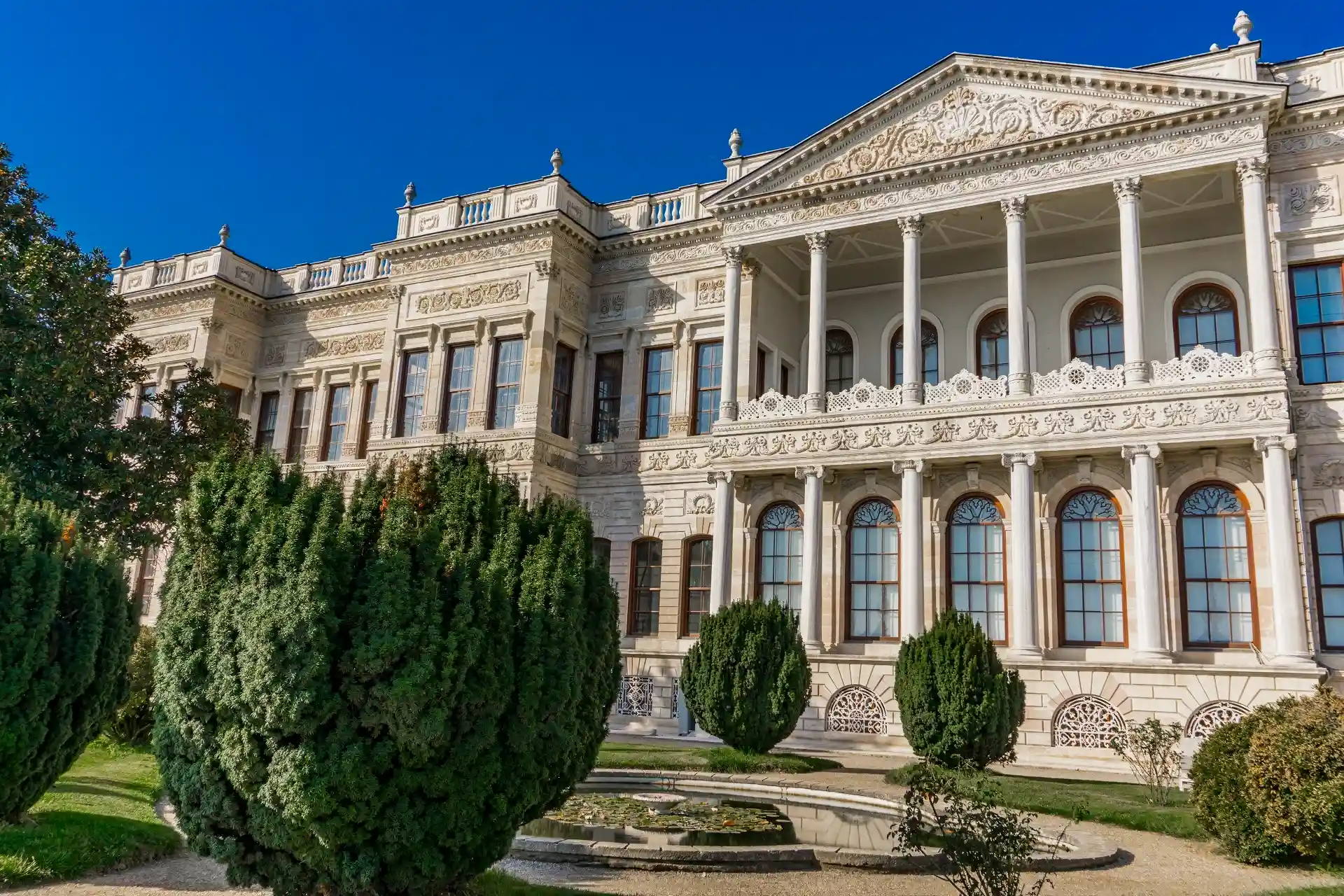
WHAT WE DO
Experience the
Elegance of Turkey
Explore Turkey’s Finest Investment Opportunities with Glowing Elegance.
At Glowing Elegance, we offer exclusive investment tours that immerse you in the charm and potential of Turkey. Our mission is to provide an exceptional experience by showcasing the country’s rich cultural heritage and promising investment opportunities.
